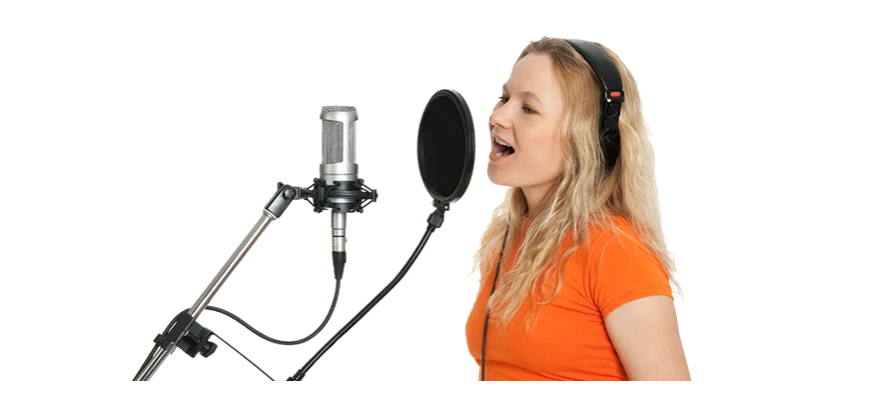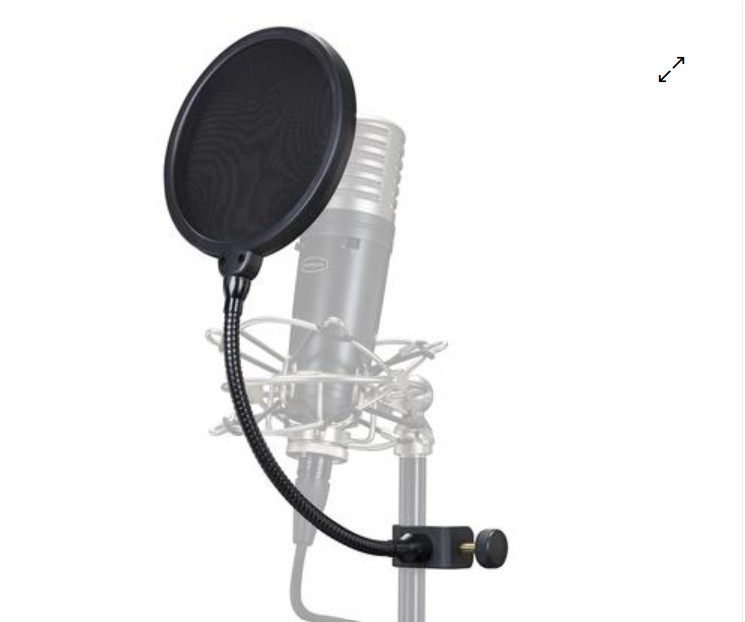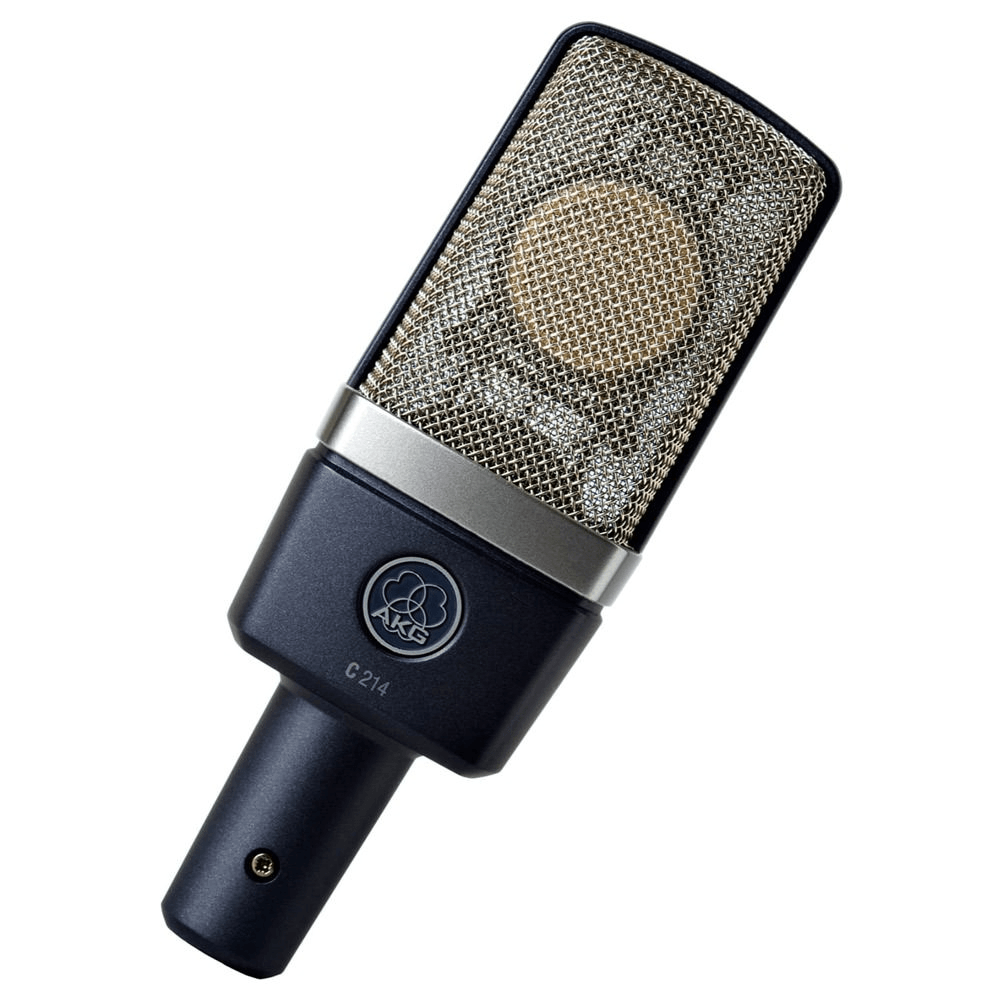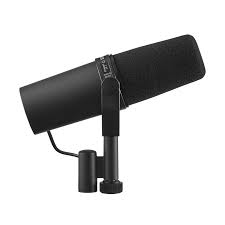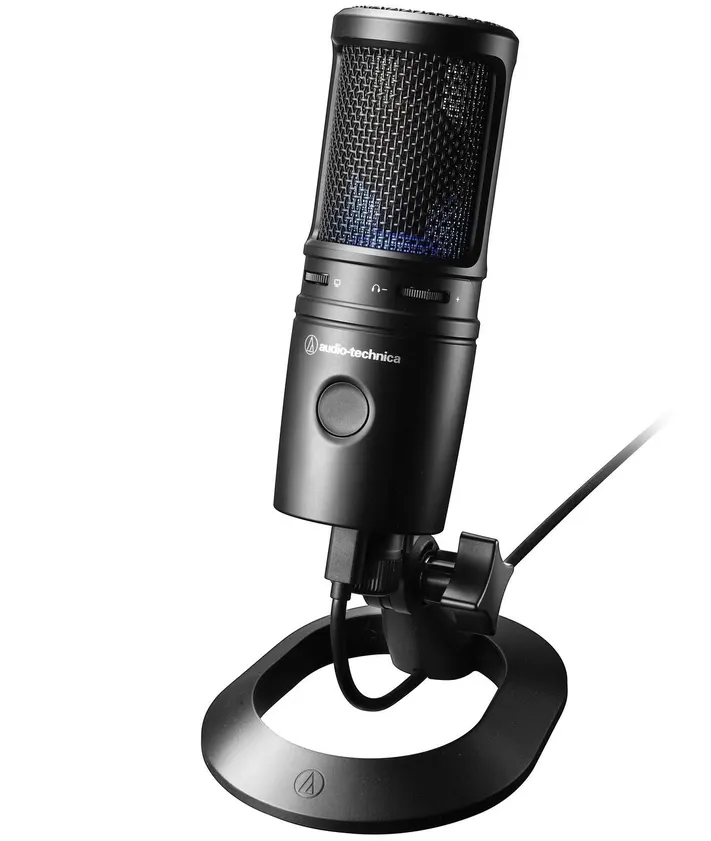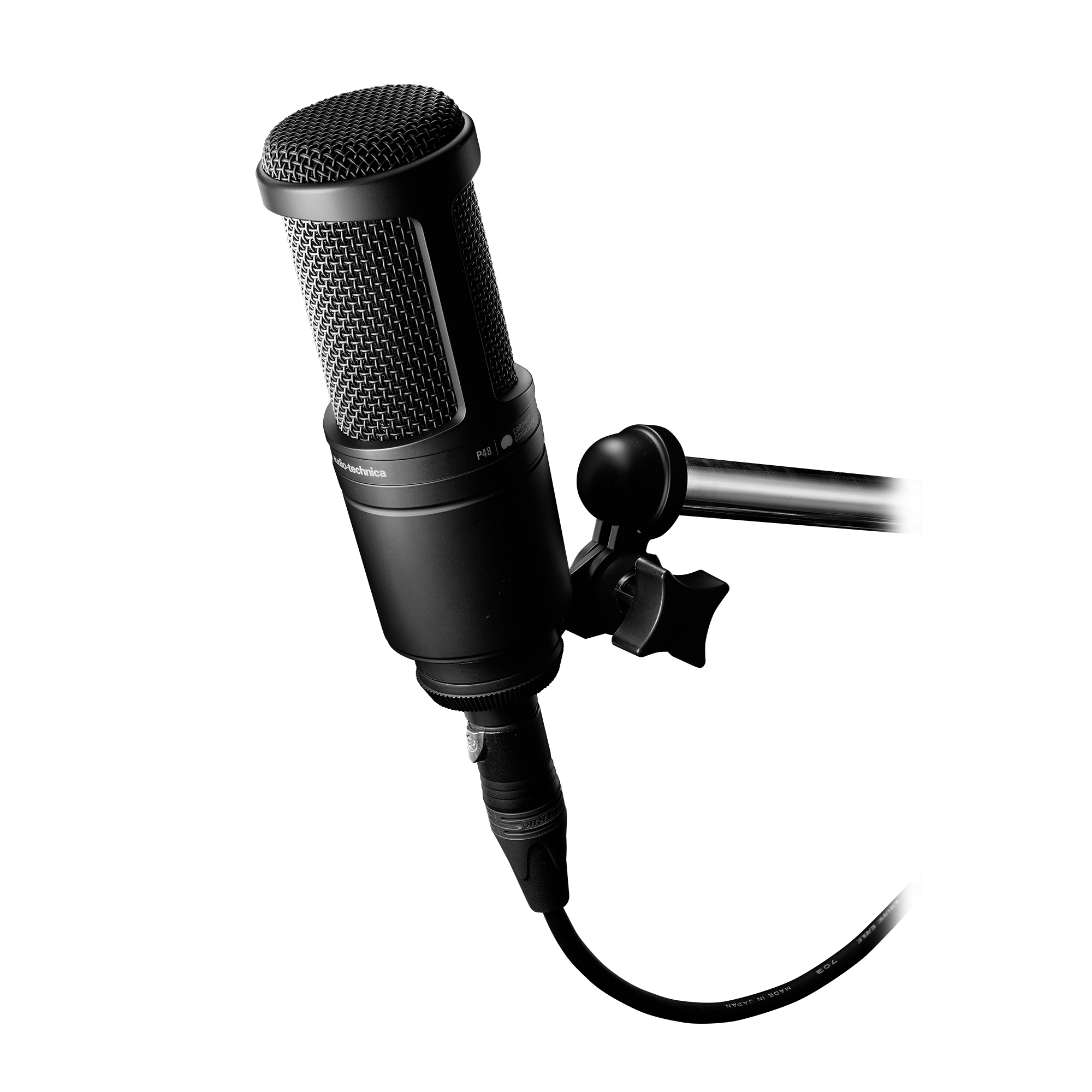Are you ready to embark on a vocal journey that brings your voice into the spotlight? Choosing the perfect beginner microphone for singing can be the key to unlocking the full potential of your vocals. Whether you’re covering chart-toppers, crooning originals, or launching a podcast, the right mic can help ensure that your voice is heard loud and clear. But with the plethora of options out there, where do you start? Fear not! We’ve compiled a list of the best beginner microphones that marry quality with simplicity, ensuring you make an informed choice without getting tangled in technical jargon. Let’s dive in and find the mic that will amplify your vocal talents!
Selecting the best beginner microphone for vocals requires careful consideration of several key criteria to ensure that budding vocalists can capture their voice with clarity and quality. Here’s what to look out for:
- Type of Microphone: There are mainly two types suitable for beginners – dynamic and condenser microphones. Dynamic mics handle high sound pressure levels and are less sensitive to rough handling, making them a durable choice. Condenser mics, however, are more sensitive and capture a broader range of frequencies, which is ideal for capturing the nuances in vocal performances.
- Polar Patterns: This refers to the directionality of the microphone. A cardioid pattern, which picks up sound primarily from the front, is useful for isolating your voice from unwanted background noise.
- Frequency Response: Look for a microphone that has a frequency response well-suited to the human voice, generally ranging from 80 Hz to 15 kHz.
- Ease of Use: As a beginner, you’ll want a microphone that is plug-and-play or comes with straightforward instructions for setup without the need for extensive sound engineering knowledge.
- Durability and Build Quality: You need a well-built microphone that can withstand minor accidents and not deteriorate in quality over time.
- Accessories and Connectivity: Some mics come with useful accessories such as stands, cables, or cases. Also, consider whether the microphone can connect easily to your existing equipment, like computers or audio interfaces.
- Price: Lastly, the microphone should offer good value for money, fitting a beginner’s budget while still delivering quality performance.
| Microphone Model | Price Range (Approx.) | Type | Polar Pattern | Connectivity | Frequency Response | Additional Features |
|---|---|---|---|---|---|---|
| Audio-Technica AT2020 | $99 – $120 | Condenser | Cardioid | XLR | 20Hz to 20kHz | High SPL handling, Versatile |
| Shure SM58 | $99 – $100 | Dynamic | Cardioid | XLR | 50Hz to 15kHz | Built-in spherical wind and pop filter |
| Blue Yeti USB Microphone | $120 – $150 | Condenser | Multiple Patterns | USB | 20Hz to 20kHz | Onboard gain control, Mute button |
| Rode NT1-A | $180 – $230 | Condenser | Cardioid | XLR | 20Hz to 20kHz | Low self-noise, Includes shock mount |
| AKG P120 | $85 – $120 | Condenser | Cardioid | XLR | 20Hz to 20kHz | Low-mass diaphragm, Bass roll-off switch |
Please note that prices can vary based on region, current deals, and retailers. Also, connectivity in this context refers to how the microphone connects to other devices (such as a computer or audio interface), indicating the cable type needed.
Keep in mind that the best beginner microphone for you will depend on factors such as the environment you are recording in, the type of vocals or instruments, and your existing setup (like having an audio interface for an XLR mic). Each microphone has been included in the list for different strengths, so consider what’s most important to you when making your decision.
Audio-Technica AT2020 Cardioid Condenser Studio XLR Microphone
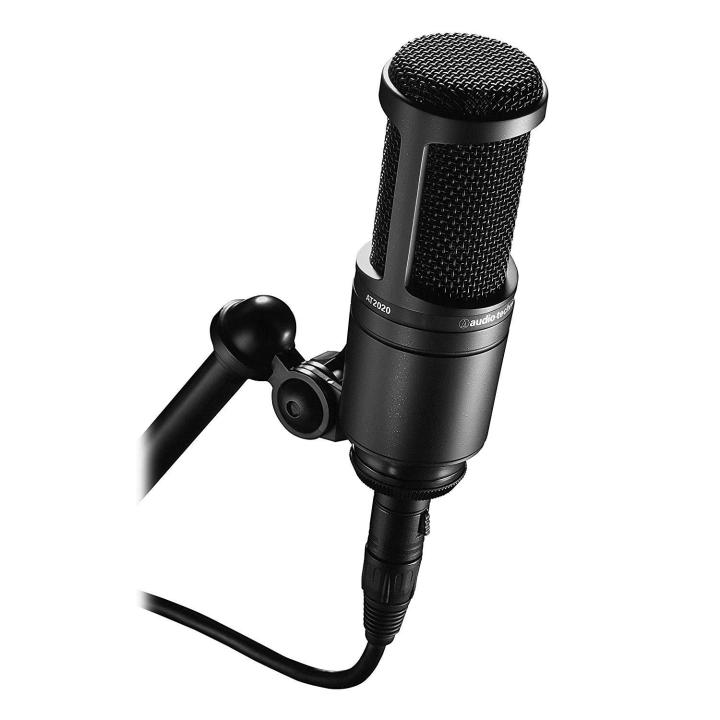
Overview:
When you’re stepping into the world of recording or streaming, the Audio-Technica AT2020 is often regarded as an ideal starter microphone, catching the attention of newcomers with its professional look and sound quality without a hefty price tag. What makes this microphone special is its ability to capture clear and detailed vocals, making it a go-to for podcasters, singers, and voice-over artists who are taking their first steps into audio recording.
Its ease of use is one of its most charming features—designed to be plug-and-play (with the necessary XLR interface), the AT2020 refuses to intimidate with complex setups. The clarity of sound it offers is fantastic, handling the nuances of vocal performances with a surprising level of finesse for something in its price bracket. It’s particularly forgiving for those who may not yet have mastered the art of recording, delivering a balanced and natural sound without requiring extensive post-production work.
Specs:
- Polar Pattern: Cardioid
- Frequency Response: 20Hz – 20kHz
- Output Connector: XLR
- Signal to Noise Ratio: 74 dB
- Phantom Power Requirement: 48V DC
Pros:
- The AT2020 boasts remarkable clarity and sound detail for its price range.
- Its robust build quality ensures durability, which is excellent for beginners who may not be as cautious with their equipment.
- The cardioid pickup pattern is effective in minimizing background noise, ensuring that the vocals are front and center.
Cons:
- It requires an XLR connection and phantom power, which means additional equipment is necessary, such as an audio interface or mixer.
- It does not come with a USB option, which may limit its plug-play friendliness for absolute beginners lacking audio interfaces.
- The microphone lacks bells and whistles like onboard controls for gain or a headphone jack for monitoring.
Price:
The Audio-Technica AT2020 is typically found in the sub-$100 range, offering significant value for money considering the audio quality and reliability it provides to novices in the field.
Personal Opinion:
In my experience, the AT2020 is a formidable ally for any novice due to its simplicity and performance. It maintains a professional edge and doesn’t fall into the trap of looking like an entry-level microphone, a trait that can boost the confidence of any rookie vocalist or podcaster. Despite the need for additional gear, once you have an audio interface in place, the microphone is a breeze to work with. It’s quite forgiving in untreated room environments and has a way of making vocals sound polished with minimal effort. The lack of USB connectivity is the only tangible drawback I’ve encountered, as it might deter those looking for a more straightforward, single-cable setup. Nonetheless, for anyone ready to take a small leap into more serious recording territory, the AT2020 is a proud and worthy contender.
Shure SM58 Dynamic Vocal Microphone

Overview:
The Shure SM58 is often the go-to microphone for both beginners and seasoned performers due to its impressive sound quality and durability. If microphones were cars, the SM58 would be that reliable sedan that experts recommend for new drivers. It’s straightforward, no-frills, but gets the job done wonderfully.
The SM58’s robust design feels like it can survive the roughest of treatments, which is reassuring for newcomers who may not yet have their stage legs. Its audio performance is equally sturdy, providing clear vocal reproduction that’s forgiving on less-than-perfect technique. While it doesn’t have the frills of USB connectivity or onboard controls, it’s this simplicity that allows beginners to focus on what matters the most – the performance.
Specs:
- Frequency Response: 50 to 15,000 Hz
- Polar Pattern: Unidirectional (Cardioid)
- Connector: Three-pin professional audio (XLR)
- Transducer Type: Dynamic
Pros & Cons:
Pros:
- Nearly indestructible build, which is great for those ‘oops’ moments beginners might have.
- Consistent sound quality that doesn’t punish users for novice mic technique.
- The cardioid pattern provides good background noise rejection, helping vocals stand out.
Cons:
- Lacks versatility for use in non-vocal recording scenarios.
- Needs an audio interface or adapter for use with computers, which can be an extra expense or a technical hurdle for some.
- No additional features like on-mic gain control or a headphone jack, which might be a drawback for those looking for an all-in-one solution.
Price:
The Shure SM58 typically hovers around $100, give or take. This price represents an excellent value considering its legendary status and performance. It’s an investment in a microphone that won’t need an upgrade as you move from beginner to more advanced stages.
In my opinion, the Shure SM58 really shines when you need a battle-tested microphone that won’t let you down, be it in rehearsal spaces, recording rooms, or live stages. Its reputation for durability means that you’re unlikely to need a replacement anytime soon, and its sound quality punches well above its weight class for vocally focused tasks. Sure, there are more specialized microphones out there, but the SM58 is the Swiss Army knife that seems to carve out a place in every vocalist’s toolkit.
Blue Yeti USB Microphone

Overview:
The Blue Yeti is an incredibly popular USB microphone that has taken the podcasting and streaming world by storm, and for good reason. Its sturdy build quality paired with exceptional ease of use makes it an ideal choice for beginners diving into the world of vocals and recording. The Yeti offers plug-and-play simplicity, meaning you can connect it to your computer and start recording without investing in additional audio interfaces or equipment.
There’s a lot to love about the Blue Yeti. It boasts multiple polar patterns—cardioid, bidirectional, omnidirectional, and stereo—giving beginners the flexibility to experiment with various recording setups. The built-in headphone jack with zero-latency monitoring is a godsend for real-time playback. The tactile controls for volume, mute, and polar pattern selection are intuitively placed, ensuring you won’t fumble through your recording session.
From a personal standpoint, what’s impressive about the Yeti is the richness and clarity it offers in its recordings. It’s one of those microphones that can elevate an amateur setup to something that sounds quite professional. Yet, it doesn’t require a steep learning curve or technical acumen to get great results.
Specs:
- Type: Condenser
- Polar Patterns: Cardioid, Bidirectional, Omnidirectional, Stereo
- Frequency Response: 20Hz – 20kHz
- Sample Rate: 48kHz
- Bit Rate: 16-bit
- Connectivity: USB
Pros & Cons:
Pros:
- Versatile recording patterns for a variety of situations.
- No need for extra gear, it’s a one-stop-shop microphone.
- Easy controls that allow instant adjustments.
- Offers impressive audio quality that outperforms its price range.
Cons:
- It’s a bit bulky and heavier than some other options, so portability could be an issue.
- The built-in gain control can be sensitive, sometimes leading to unintentional loudness adjustments.
Price:
The Blue Yeti USB Microphone is a fantastic bang for your buck if you are venturing into the world of vocal recording. It usually retails anywhere between $100 to $130, which is a modest price for the quality and functionality it delivers.
The Blue Yeti is, in my opinion, a smart choice for beginners due to its combination of quality, versatility, and ease of use. It’s the Swiss Army knife of USB microphones, and though no single tool is perfect for every job, the Yeti comes close, especially for those just starting out. Its quality is reliable enough to carry you from amateur status to a more experienced level without the need to upgrade equipment prematurely.
Rode NT1-A Large Diaphragm Condenser Microphone

Overview
The Rode NT1-A emanates a certain class and professionalism from the moment you lay eyes on it. I really appreciate its sleek and minimalistic design, which doesn’t try to distract you with unnecessary bells and whistles. When it comes to beginner microphones aimed at capturing vocals, the NT1-A stands out for its ease of use coupled with exceptional sound clarity, which is a rare find at entry-level.
The sound profile of the NT1-A is remarkably clear, boasting a warm and true capture of vocals, whether you’re dabbling in singing, podcasting, or voice-overs. From my experience, the crispness of the recording is truly impressive for a mic at this price point, and the low noise floor is a dream come true for recording enthusiasts who are often at war with unwanted sounds in their recordings.
Specs
- Acoustic Principle: Pressure gradient
- Active Electronics: JFET impedance converter with bipolar output buffer
- Pickup Pattern: Cardioid
- Frequency Range: 20Hz – 20kHz
- Output Impedance: 100Ω
- Maximum SPL: 137dB SPL (@ 1kHz, 1% THD into 1KΩ load)
- Sensitivity: -31.9dB re 1 Volt/Pascal (25.00mV @ 94 dB SPL) +/- 2 dB @ 1kHz
Pros:
- The polished presence brings out the best in your vocals which I found to be particularly flattering for softer singing styles.
- It has an extremely low self-noise level. You won’t find that annoying hiss that can mar recordings, especially during quiet passages.
- Comes as a complete package with a shock mount, pop shield, and XLR cable, which is a nice touch for beginners who might not know what accessories to buy.
- The build quality is solid, promising a long-lasting tool in your audio arsenal.
Cons:
- The NT1-A is limited to a cardioid pickup pattern, which could be a drawback for those looking to experiment with different recording patterns.
- Requires an audio interface with phantom power, which might add extra cost if you don’t already own one.
Price
At the time of my review, the Rode NT1-A typically sits in the mid-range price bracket—well-justified given its features and accessories. Although prices fluctuate, it’s usually found around $200-$250, making it a smart investment for serious beginners who have a little more to spend for quality.
In summary, the Rode NT1-A is a gem in the rough for newcomers to the world of recording. It’s a microphone that won’t let you down as you take on new vocal challenges.
AKG P120 High-Performance General-Purpose Recording Microphone

Overview
The AKG P120 is a solid contender in the realm of microphones tailored for beginners who are keen on dipping their toes into vocal recording without breaking the bank. It boasts an elegant design that feels substantial and durable, certainly giving off an air of professionalism on your desk or in your recording setup. My personal experience with the P120 has been largely positive, particularly with the rich and warm sound it produces, which could make your vocals seem like they’ve been touched by a bit of studio magic, even if you’re recording in a home setting.
One of the things that captured my attention was its versatility — the microphone performs admirably whether you’re recording podcasts, singing, or even capturing instruments. The low-mass diaphragm provides a clear sound with a pleasant high-end which, for a microphone at this price point, is impressive.
Specs
- Polar Pattern: Cardioid
- Frequency Response: 20Hz to 20kHz
- Sensitivity: 24 mV/Pa
- Max SPL: 130/150 dB (0/-20 dB)
- Equivalent Noise Level: 19 dB-A
- Connector: XLR
Pros
- Value for Money: For someone starting out, getting studio-like sound quality at an entry-level price is quite a win.
- Build Quality: It feels sturdy and well-made. I’ve seen this thing take a couple of knocks and come out unscathed.
- Ease of Use: You don’t need to be a sound engineer to get the best out of this microphone. It’s pretty much plug-and-play, provided you have an interface.
- Low Noise: The self-noise is surprisingly low, which means you get a cleaner recording, very important for post-production.
Cons
- Requires Phantom Power: Not necessarily a con but something to be aware of. You’d need an audio interface or a mixer that provides phantom power.
- Accessories Not Included: It comes with a simple stand adapter, so you might need to invest in a shock mount or boom arm for better stability.
Price
The AKG P120 sits in a comfortable price bracket that doesn’t intimidate beginners, typically costing around $99, though prices may vary depending on the retailer. Considering the features and sound quality, it’s a worthy investment for those starting out.
In my opinion, the AKG P120 is a hidden gem among microphones geared towards novices. It delivers a professional feel and sound that may even surprise seasoned users. Its greatest selling point is the combination of affordability and quality, making it an excellent choice for vocalists wanting to make their entry into recording without compromising on sound fidelity. Just remember to ensure you have the necessary phantom power source, and you’ll be set up for recording sessions that produce praiseworthy results.
Conclusion:
Selecting the perfect beginner microphone for vocal recordings is paramount in achieving good quality sound without breaking the bank. The options we’ve reviewed today offer a mix of affordability, ease of use, and sound quality tailored for those just starting their audio adventures. Remember, the best microphone is one that fits your specific needs, be it for podcasting, singing, or content creation. With the right mic in hand, your voice will be heard clearly and crisply, laying the foundation for your growing presence in the audio world.
Ready to take your vocal performances to the next level with added flexibility? Consider stepping up your game with a wireless lavalier microphone – a beginner-friendly tool allowing complete freedom of movement and crystal-clear audio capture.
Best Seller
Sale
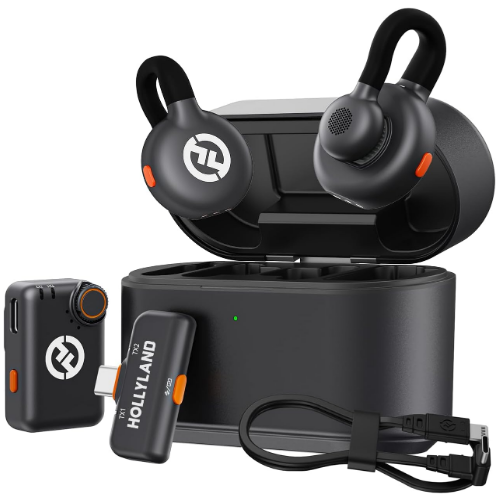
Hollyland LARK M2S – Wireless Clip-on Microphone
- 7g Lightweight, Titanium Clip, Discreet Design
- Clear sound with 24-bit/48kHz, 70dB SNR, 116dB SPL
- Noise Cancellation & 300m Long-Range Stability
- Works with Camera/iPhone/Android/Laptop
- Perfect for Content Creators, Online-Teaching, Streaming
$139
$159
FAQs:
Q1: What should I look for in a beginner microphone for vocals?
A1: Look for a microphone that offers decent sound quality, durability, and ease of use. Consider if you prefer a USB or XLR connection, the polar pattern that suits your environment, and if the microphone comes with any additional accessories like a pop filter or shock mount.
Q2: Do I need any additional equipment to use a beginner microphone?
A2: This depends on the type of microphone. USB mics often need no additional equipment, while XLR microphones may require an audio interface, a mic stand, and perhaps a cable. Check what’s included with your microphone purchase.
Q3: Can I use a beginner microphone for professional recordings?
A3: While a beginner microphone can offer good quality sound, professional recordings typically demand higher-end equipment. However, some beginner microphones can serve well in a professional setup, especially if you’re skilled in post-production editing to enhance the audio quality.
































.png)


